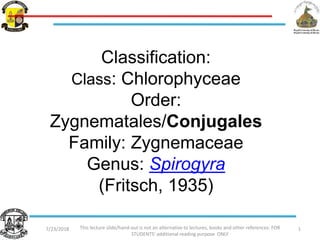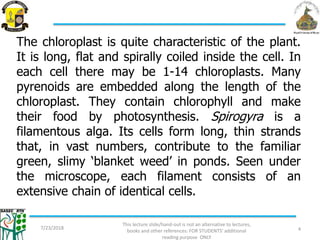Spirogyra is a common freshwater green alga that forms long, thin filaments. It reproduces both asexually through fragmentation and sexually through conjugation. During conjugation, projections grow out from adjacent cells in different filaments and their contents fuse, forming zygospores. The zygospores are resistant and may lie dormant before germinating into new haploid filaments.



































